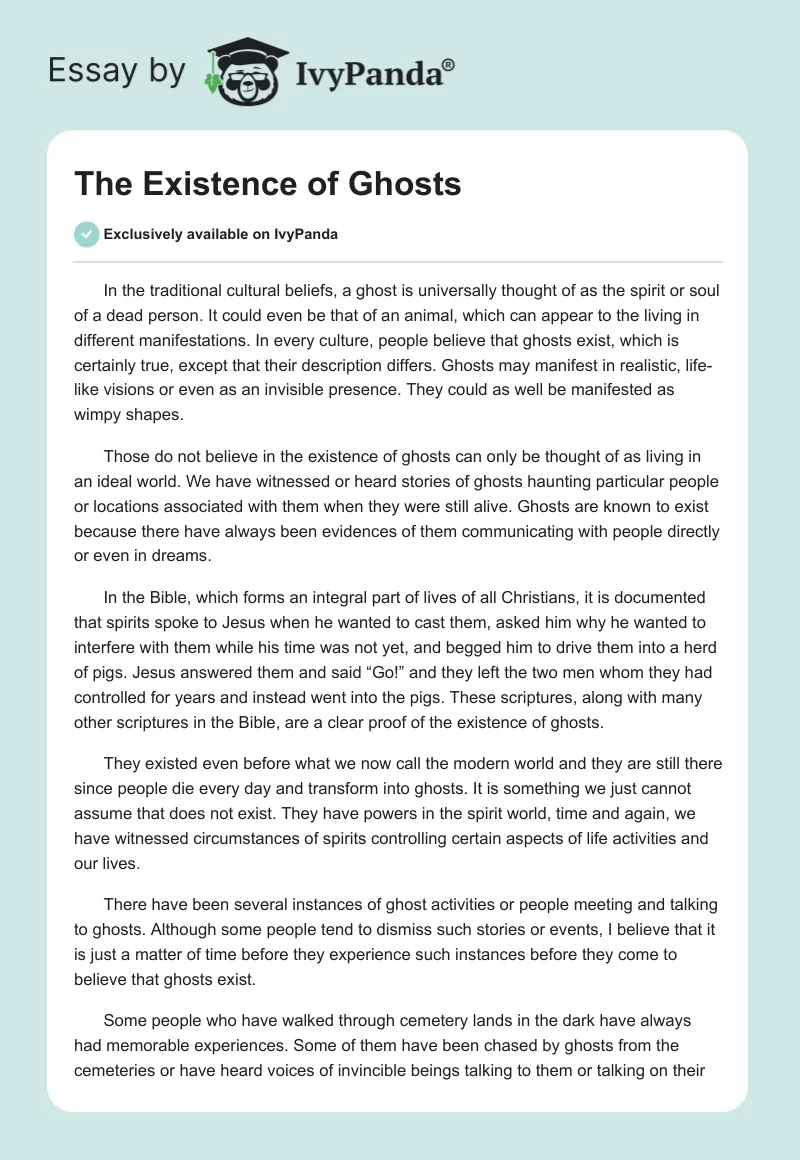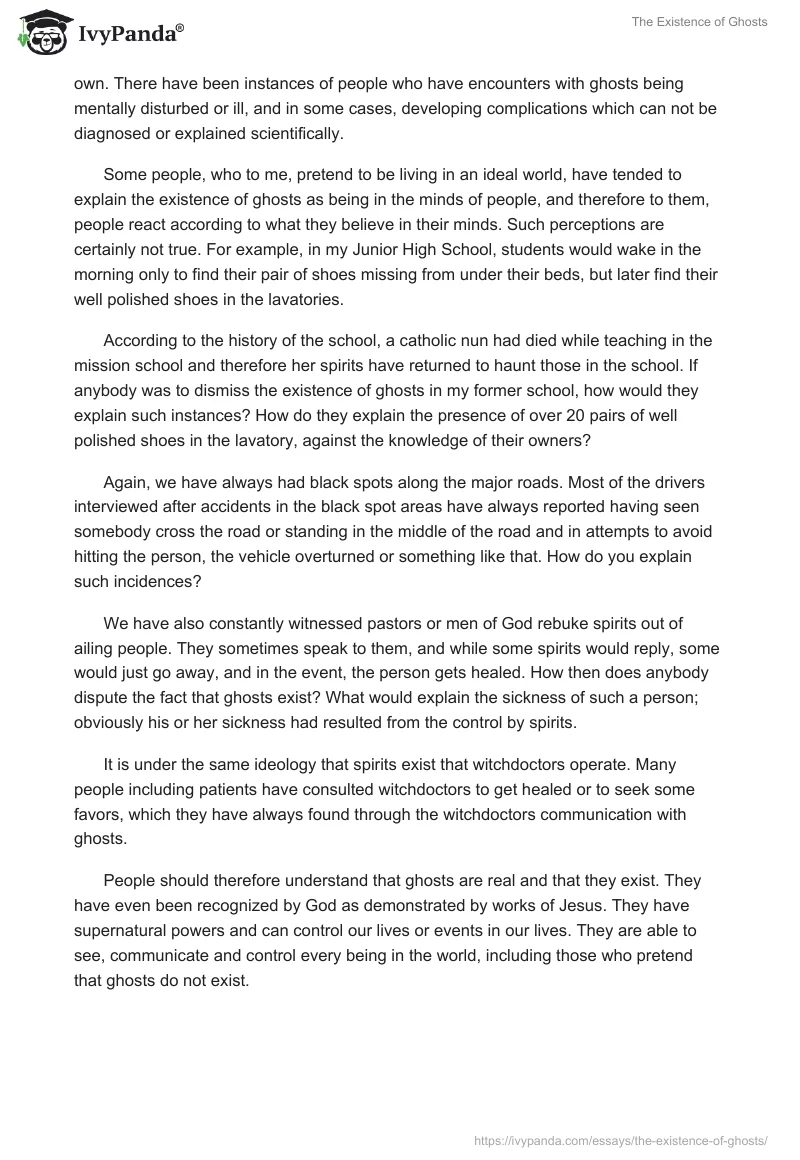In the traditional cultural beliefs, a ghost is universally thought of as the spirit or soul of a dead person. It could even be that of an animal, which can appear to the living in different manifestations. In every culture, people believe that ghosts exist, which is certainly true, except that their description differs. Ghosts may manifest in realistic, life-like visions or even as an invisible presence. They could as well be manifested as wimpy shapes.
Those do not believe in the existence of ghosts can only be thought of as living in an ideal world. We have witnessed or heard stories of ghosts haunting particular people or locations associated with them when they were still alive. Ghosts are known to exist because there have always been evidences of them communicating with people directly or even in dreams.
In the Bible, which forms an integral part of lives of all Christians, it is documented that spirits spoke to Jesus when he wanted to cast them, asked him why he wanted to interfere with them while his time was not yet, and begged him to drive them into a herd of pigs. Jesus answered them and said “Go!” and they left the two men whom they had controlled for years and instead went into the pigs. These scriptures, along with many other scriptures in the Bible, are a clear proof of the existence of ghosts.
They existed even before what we now call the modern world and they are still there since people die every day and transform into ghosts. It is something we just cannot assume that does not exist. They have powers in the spirit world, time and again, we have witnessed circumstances of spirits controlling certain aspects of life activities and our lives.
There have been several instances of ghost activities or people meeting and talking to ghosts. Although some people tend to dismiss such stories or events, I believe that it is just a matter of time before they experience such instances before they come to believe that ghosts exist.
Some people who have walked through cemetery lands in the dark have always had memorable experiences. Some of them have been chased by ghosts from the cemeteries or have heard voices of invincible beings talking to them or talking on their own. There have been instances of people who have encounters with ghosts being mentally disturbed or ill, and in some cases, developing complications which can not be diagnosed or explained scientifically.
Some people, who to me, pretend to be living in an ideal world, have tended to explain the existence of ghosts as being in the minds of people, and therefore to them, people react according to what they believe in their minds. Such perceptions are certainly not true. For example, in my Junior High School, students would wake in the morning only to find their pair of shoes missing from under their beds, but later find their well polished shoes in the lavatories.
According to the history of the school, a catholic nun had died while teaching in the mission school and therefore her spirits have returned to haunt those in the school. If anybody was to dismiss the existence of ghosts in my former school, how would they explain such instances? How do they explain the presence of over 20 pairs of well polished shoes in the lavatory, against the knowledge of their owners?
Again, we have always had black spots along the major roads. Most of the drivers interviewed after accidents in the black spot areas have always reported having seen somebody cross the road or standing in the middle of the road and in attempts to avoid hitting the person, the vehicle overturned or something like that. How do you explain such incidences?
We have also constantly witnessed pastors or men of God rebuke spirits out of ailing people. They sometimes speak to them, and while some spirits would reply, some would just go away, and in the event, the person gets healed. How then does anybody dispute the fact that ghosts exist? What would explain the sickness of such a person; obviously his or her sickness had resulted from the control by spirits.
It is under the same ideology that spirits exist that witchdoctors operate. Many people including patients have consulted witchdoctors to get healed or to seek some favors, which they have always found through the witchdoctors communication with ghosts.
People should therefore understand that ghosts are real and that they exist. They have even been recognized by God as demonstrated by works of Jesus. They have supernatural powers and can control our lives or events in our lives. They are able to see, communicate and control every being in the world, including those who pretend that ghosts do not exist.


